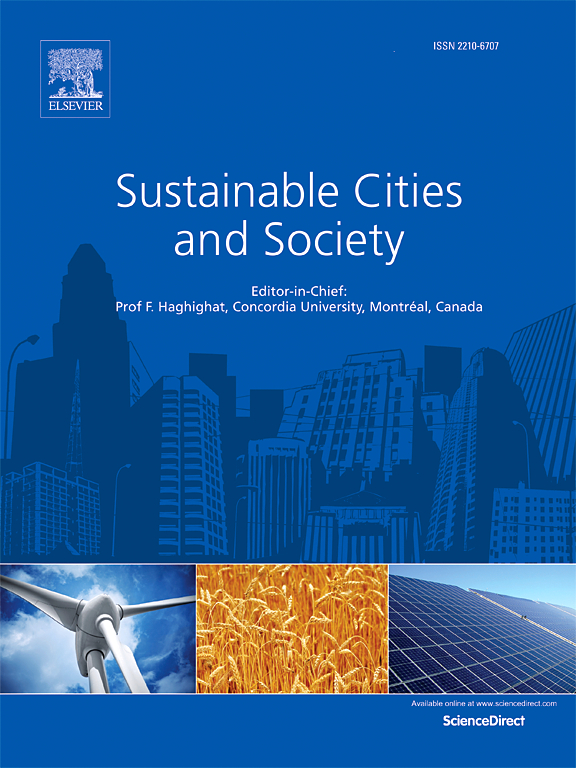Exploring the cooling intensity of green cover on urban heat island: A case study of nine main urban districts in Chongqing
IF 10.5
1区 工程技术
Q1 CONSTRUCTION & BUILDING TECHNOLOGY
引用次数: 0
Abstract
With the acceleration of urbanization, the Urban Heat Island (UHI) effect has become one of the major environmental challenges faced by cities worldwide. This study investigates the cooling effect of green cover across nine urban districts in Chongqing and assesses its impact on the UHI effect. By integrating MODIS and Sentinel-2 data, a Random Forest(RF) model was employed to generate 10-meter resolution UHI data. OLS regression revealed a significant decline in cooling intensity in city centers from 2019 to 2024, with Yuzhong District averaging as low as 0.5, while peripheral districts such as Banan and Beibei maintained values above 0.8. Binomial regression demonstrated a lag effect between cooling intensity and UHI, with an R² of 0.71, highlighting the temporal interplay between these variables. Scenario analysis under SSP1-2.6 indicates that average AT can be limited to 22°C with sustained green cover, whereas SSP5-8.5 projects temperature increases nearing 28°C, exacerbating thermal stress. Feature importance analysis using the Principal Component Analysis (PCA) and LightGBM identified Normalized Difference Water Index(NDWI), building density, transportation networks, and population density as the primary drivers of UHI intensity. These findings underscore the critical role of urban greening in mitigating UHI effects and highlight the necessity of integrating green cover strategies into sustainable urban development to enhance climate resilience.
求助全文
约1分钟内获得全文
求助全文
来源期刊

Sustainable Cities and Society
Social Sciences-Geography, Planning and Development
CiteScore
22.00
自引率
13.70%
发文量
810
审稿时长
27 days
期刊介绍:
Sustainable Cities and Society (SCS) is an international journal that focuses on fundamental and applied research to promote environmentally sustainable and socially resilient cities. The journal welcomes cross-cutting, multi-disciplinary research in various areas, including:
1. Smart cities and resilient environments;
2. Alternative/clean energy sources, energy distribution, distributed energy generation, and energy demand reduction/management;
3. Monitoring and improving air quality in built environment and cities (e.g., healthy built environment and air quality management);
4. Energy efficient, low/zero carbon, and green buildings/communities;
5. Climate change mitigation and adaptation in urban environments;
6. Green infrastructure and BMPs;
7. Environmental Footprint accounting and management;
8. Urban agriculture and forestry;
9. ICT, smart grid and intelligent infrastructure;
10. Urban design/planning, regulations, legislation, certification, economics, and policy;
11. Social aspects, impacts and resiliency of cities;
12. Behavior monitoring, analysis and change within urban communities;
13. Health monitoring and improvement;
14. Nexus issues related to sustainable cities and societies;
15. Smart city governance;
16. Decision Support Systems for trade-off and uncertainty analysis for improved management of cities and society;
17. Big data, machine learning, and artificial intelligence applications and case studies;
18. Critical infrastructure protection, including security, privacy, forensics, and reliability issues of cyber-physical systems.
19. Water footprint reduction and urban water distribution, harvesting, treatment, reuse and management;
20. Waste reduction and recycling;
21. Wastewater collection, treatment and recycling;
22. Smart, clean and healthy transportation systems and infrastructure;
 求助内容:
求助内容: 应助结果提醒方式:
应助结果提醒方式:


